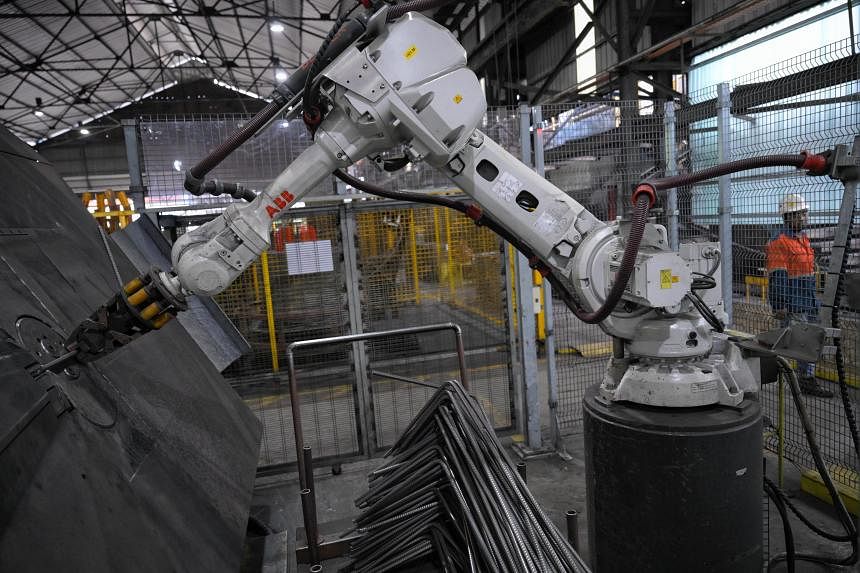SINGAPORE - While Singapore’s workplace death and major injury rate fell to a record low in 2023, and major industries saw fewer injuries, the manufacturing sector was still a problem.
Although fatalities in the sector dropped from seven in 2022 to five in 2023, the number of major injury cases jumped from 122 to 150, according to the Ministry of Manpower’s (MOM) annual workplace safety and health numbers released on March 27.
The sector was flagged by MOM for having the highest combined fatal and major injury rates, surpassing the construction and transportation and storage sectors.
Ms Tan Man Ee, chairwoman of the Workplace Safety and Health (WSH) Council’s manufacturing committee, told The Straits Times on April 5 that some companies are afraid to embrace safety as they are concerned about cost.
Ms Tan, who is also chief operating officer and a director at metalworking company NatSteel, said: “Many of them think that investing in safety is a cost. But they fail to see that if they provide a safe work environment for their employees, the employees will feel more at ease and productivity will improve.”
Calling them short-sighted, Ms Tan added: “All you need is for one incident to happen... whatever savings you have will all be wiped out, because there’s time lost (and) you have to stop your processes.”
The WSH Council, a statutory body under MOM, works with industries to improve workplace safety and health.
MOM noted in May 2023 that small and medium-sized enterprises (SMEs) in the construction, manufacturing, and transport and storage industries have had higher death and major injury rates compared with other companies.
The WSH Council said one of the most common challenges SMEs face is the lack of resources or knowledge.
It plans to reach out to over 5,000 manufacturing SMEs in 2024 to share workplace safety resources, such as StartSAFE, a free programme that helps companies identify workplace risks.
The council added that SMEs can download two new resources: an updated START Guide for SMEs, and SME WSH Packs, a series of bite-sized materials about common accident types.
To date, these two resources have been downloaded more than 13,000 times, it said.
MOM said on March 27 that the metalworking industry, which is part of the manufacturing sector, was of particular concern. It had 61 fatal and major injury cases in 2023, up from 40 in 2022.
The WSH Council said the main challenge for metalworking companies is their reliance on manual labour, making the risk of injury much higher.
ST visited NatSteel on April 5 and saw several innovations that the company introduced in 2023 to improve workplace safety.
In 2013, it had 36 cases of workplace injuries. This dropped to 13 cases in 2018, and then to below 10 each year from 2021 to 2023.
Ms Tan said all the cases in 2023 were minor injuries, such as cuts from material handling.
She added that despite numerous safety procedures in place, the company is still concerned about behavioural safety, such as workers not wearing their personal protective equipment properly.
NatSteel has installed artificial intelligence (AI) cameras around its worksite to detect safety breaches and send alerts to supervisors.
“With this AI (system), we can correct them earlier. It’s not to catch them, but it is to explain to them and correct their wrong behaviour,” said Ms Tan.
She said NatSteel spent over $100,000 on the AI system, which made work easier for supervisors who used to sieve through hours of CCTV recordings to spot safety breaches.
At a station for cutting and bending steel bars, the company added a robotic arm to remove the processed bars from the machine.
Principal engineer Somasundaram Vijay Shankar said the workers used to remove 5,000 steel bars by hand daily, which could lead to back and shoulder pain, and hurt the hands of workers even when they wear gloves.
The company also has an automated welding machine with two arms – resembling hands – that deftly weld steel cages. Two welders used to take turns to complete this work, but now only one is needed to monitor the machine.
Principal engineer Sim Wei Poh said this protects the welders, and has improved productivity by about 25 per cent.
Production officer Md Zahangir Alam, who has been with NatSteel for 22 years, said he used to be nonchalant about following safety rules such as wearing his helmet at worksites.
But the company’s training changed his mindset. Mr Alam is now a safety leader who supervises about 30 workers and constantly reminds them to wear their safety equipment properly.
He said: “(We have to) help someone do the correct thing at the correct time. If it’s a little bit late, there could be a price to pay.”

